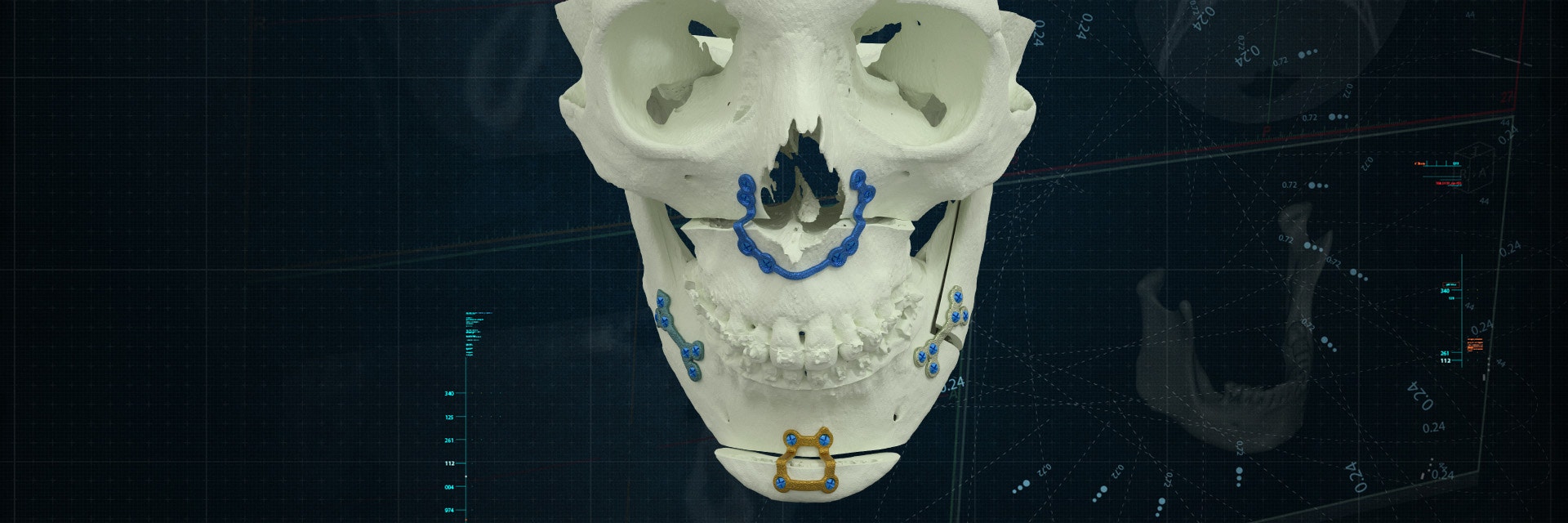EXPERT INSIGHT
Personalized CMF Solutions Support Success in Minimally Invasive Orthognathic Surgery
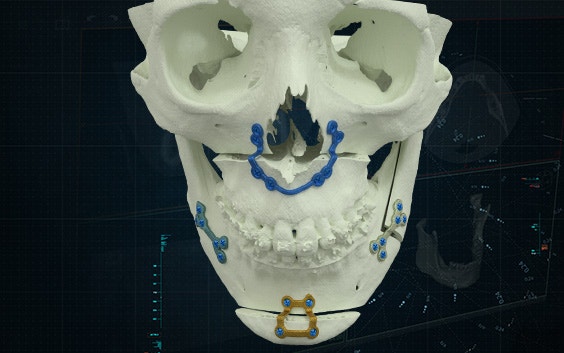
In the ever-evolving landscape of medical technology, CMF surgeons are increasingly opting to perform minimally invasive orthognathic surgery (MIOS) thanks to the support of personalized implants.
However, planning and executing MIOS comes with its own challenges, which is why surgeons like Mr. Luis Bruzual, The Dudley Group, NHS Trust, United Kingdom, are turning to 3D surgical planning software and 3D-printed medical devices to support this approach.
Mr. Bruzual finds that 3D technology helps to improve surgical accuracy, reduce intraoperative time, and reduce reoperation significantly. While simultaneously providing a better patient experience thanks to faster healing and recovery time.
According to him in a recent webinar, "Both the customized approach, and now with the minimally invasive one, we can actually improve patient recovery and shorten the rehabilitation period while also enabling surgeons to perform surgery in a more gentle and more precise manner.”
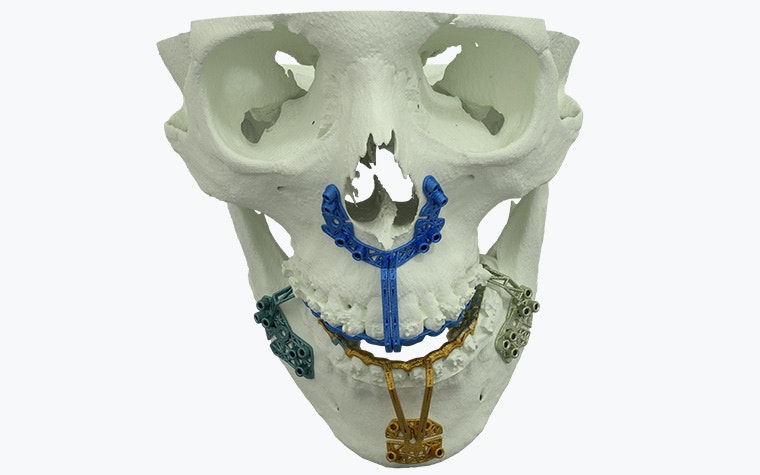

The advantages of using 3D technology in minimally invasive orthognathic surgery
Compared to traditional orthognathic surgery, Mr. Bruzual states that MIOS can significantly minimize the physical and aesthetic impact on the patient. Here’s how.
1. Smaller incisions and reduced scarring
Enhanced 3D surgical planning provides surgeons with more detailed anatomical insights, enabling them to identify the least invasive surgical routes for each patient. Unlike traditional orthognathic surgery, the use of 3D surgical planning and tools means that minimal incisions are needed, which can be planned before going to the OR.
Mr. Bruzual noted, “With the minimal invasive, we can reduce the amount of total scarring, enhancing the aesthetic results.”
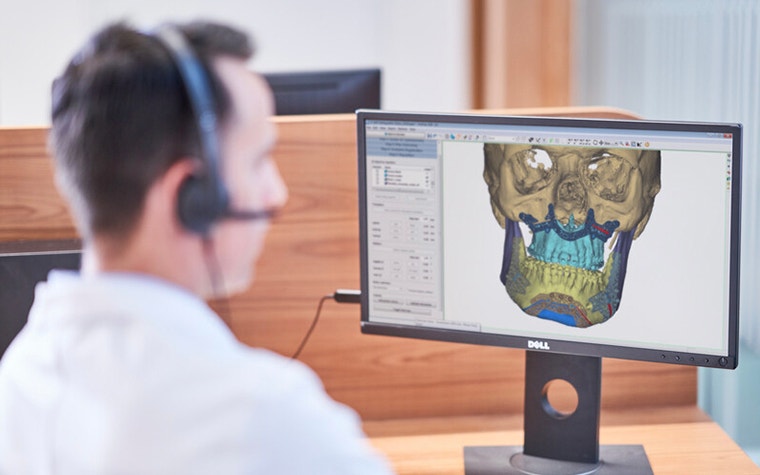

2. High-level surgical precision
With advanced 3D surgical planning software and tools, surgeons can plan and execute surgery more precisely. Prior to the procedure, a surgeon can already plan and analyze the optimal surgical plan down to the millimeter. As put by Mr. Bruzual, “The good thing about planning in 3D software is that we can actually see where the gaps are, and the contacts can be predicted way in advance before taking the patient to the operating theatre.”
Plus, the option to order 3D-printed surgical guides and personalized implants brings the surgical plan to life. The guides fit on the patient’s anatomy to show the surgeon exactly where they need to cut and screw to perform the surgery, thus helping them reach the desired surgical outcome. For MIOS, the guides have a much smaller footprint on the bone than before, while keeping the same level of accuracy.
The personalized implants are 3D printed in titanium, and the screws are placed in such a way as to avoid the nerves and tooth roots. This enhanced level of precision leads to better outcomes in terms of jaw alignment, as surgeons can better navigate the patient’s individual anatomical structures. Increased precision also reduces the risk of surgical errors and complications, leading to a better overall surgical outcome.
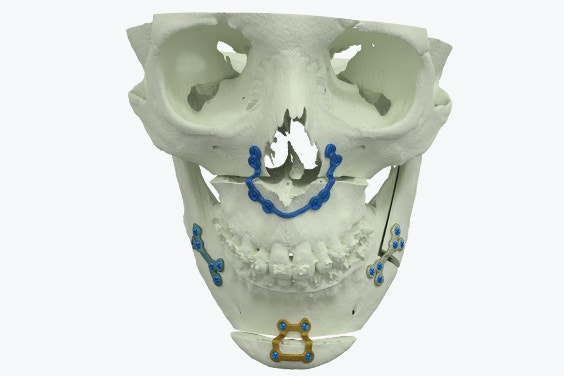
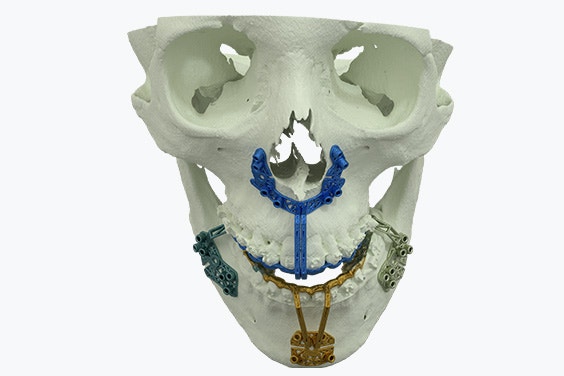
Personalized titanium plates (left) provide an accurate position, restoring the patient’s function and aesthetics. Personalized, tooth-supported, titanium guides (right) are created with the smallest possible footprint while preserving a unique fit to the bone.
3. Shorter recovery times
With 3D surgical planning software enabling a higher level of precision, 3D-assisted MIOS results in reduced soft tissue disruption. With less damage to the soft tissue, patients will benefit from a quicker recovery period and will be able to return to their normal routine and diet sooner than they would with traditional surgery.
“With the minimally invasive approach, we can improve patient's post-operative experience,” says Mr. Bruzual. “We can shorten the admission time basically to either one day, one night, or maybe discharge the patient on the same day.”
4. Enhanced aesthetic outcomes
Orthognathic surgery is carried out for a number of functional and aesthetic reasons, such as correcting speech problems, treating sleep apnea, and improving facial profiles. “We’re looking for the optimal result by means of correction. Correcting the asymmetry, correcting the occlusion, and also providing the patient with the best soft tissue results,” says M Bruzual.
3D printing enables the production of personalized implants and surgical guides that perfectly fit the patient’s facial contours, which results in a more natural and visually appealing appearance after surgery. Plus, due to advanced 3D visualization technology, surgeons can strategically place incisions in less noticeable locations, leading to less unsightly scarring.
So, not only does 3D-powered MIOS minimize scarring and swelling, but patients and surgeons can also expect improved aesthetic results. Providing insights from a surgical perspective, Mr. Bruzual says, “There's less lip fibrosis, there's better facial expression due to the small cut in the muscles of expression, and there's less widening of the nasal base.”
5. Improved patient experience
3D technology solutions play a leading role in improving a patient’s surgical experience. With Materialise 3D technology, surgeons can personalize a patient’s surgical plan to their individual anatomy and needs. This helps patients experience less post-operative discomfort and pain, due to the decreased trauma to soft tissue. Patients will also benefit from a shorter hospital stay, as smaller incisions and reduced soft tissue damage result in a much faster healing and recovery time.
3D tech for personalized approaches for MIOS
“3D planning surgical solutions can provide surgical accuracy, reduce intraoperative time, and reduce significant reoperation in minimally invasive orthognathic surgery,” concludes Mr. Bruzual.
All with a better patient experience due to faster healing and recovery time from a shorter hospital stay, smaller incisions, and reduced soft tissue damage.
With advanced imaging and precision tools such as 3D planning and patient-specific personalized implants, Materialise solutions can assist surgeons with creating highly personalized and precise surgical plans — empowering them to improve surgical accuracy, reduce time in the operating room, and achieve overall better treatment outcomes for their patients.
L-103622-01
Share on:
You might also like
Never miss a story like this. Get curated content delivered straight to your inbox.
